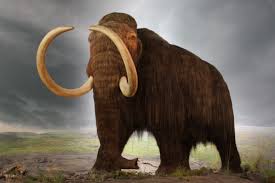In the film Jurassic Park scientists spliced the DNA of extinct dinosaurs with modern animals to bring them back to life. The idea that we could bring an extinct species back to life is fantastical and normally reserved for Hollywood fiction, but a new experiment by researchers at Harvard University has reportedly succeeded in mimicking the process used in the blockbuster movie.
According to Popular Science, the DNA of the Woolly Mammoth, which went extinct over 4,000 years ago, has been spliced with that of the Asian elephant. “We now have functioning elephant cells with mammoth DNA in them,” says Harvard genetics professor George Church.
Geneticist George Church’s lab at Harvard University successfully copied genes from frozen woolly mammoths and pasted them into the genome of an Asian elephant.
Using a DNA editing tool called CRISPR, the scientists spliced genes for the mammoths’ small ears, subcutaneous fat, and hair length and color into the DNA of elephant skin cells. The tissue cultures represent the first time woolly mammoth genes have been functional since the species went extinct around 4,000 years ago.
…
The work is part of an effort to bring extinct species back from the dead, a process called “de-extinction”. The recent breakthrough shows that one proposed de-extinction method–which involves splicing genes from extinct animals into the genomes of their living relatives–just might work.

